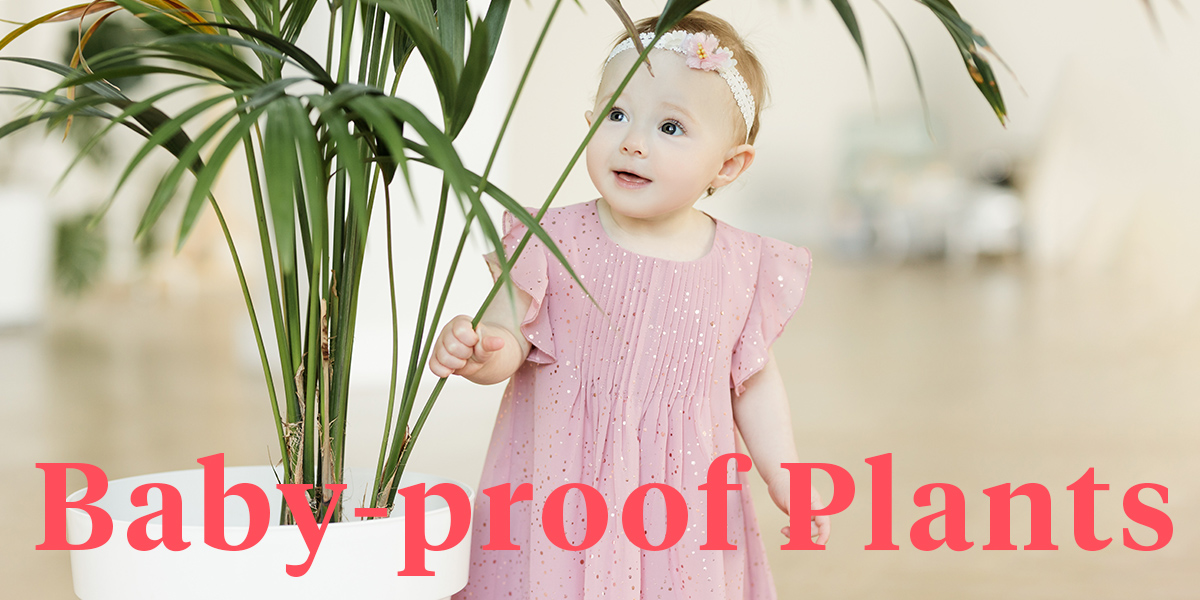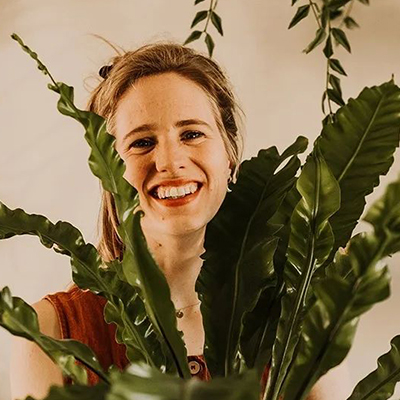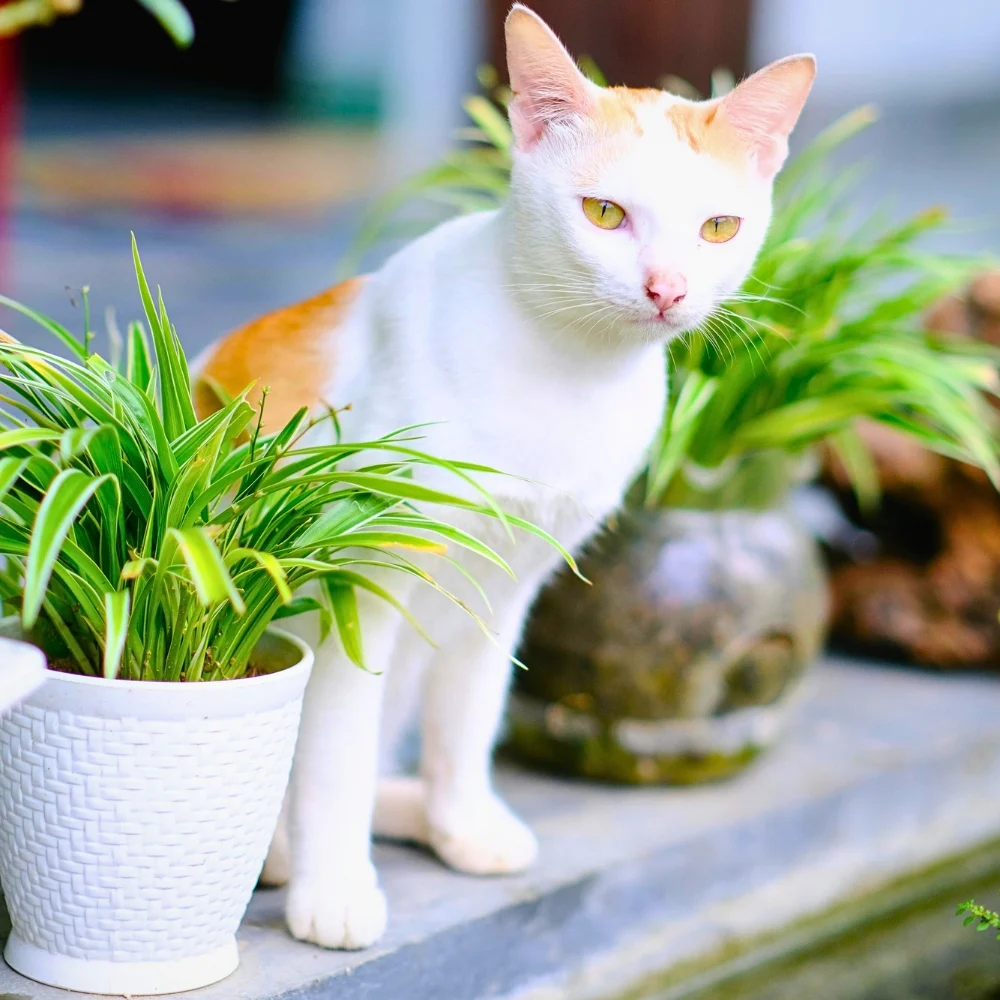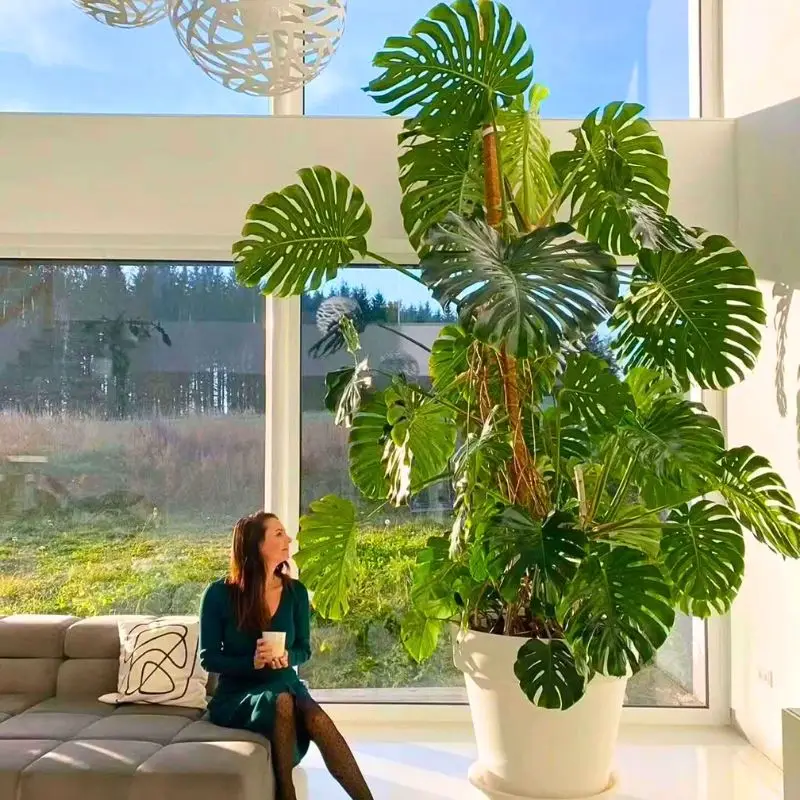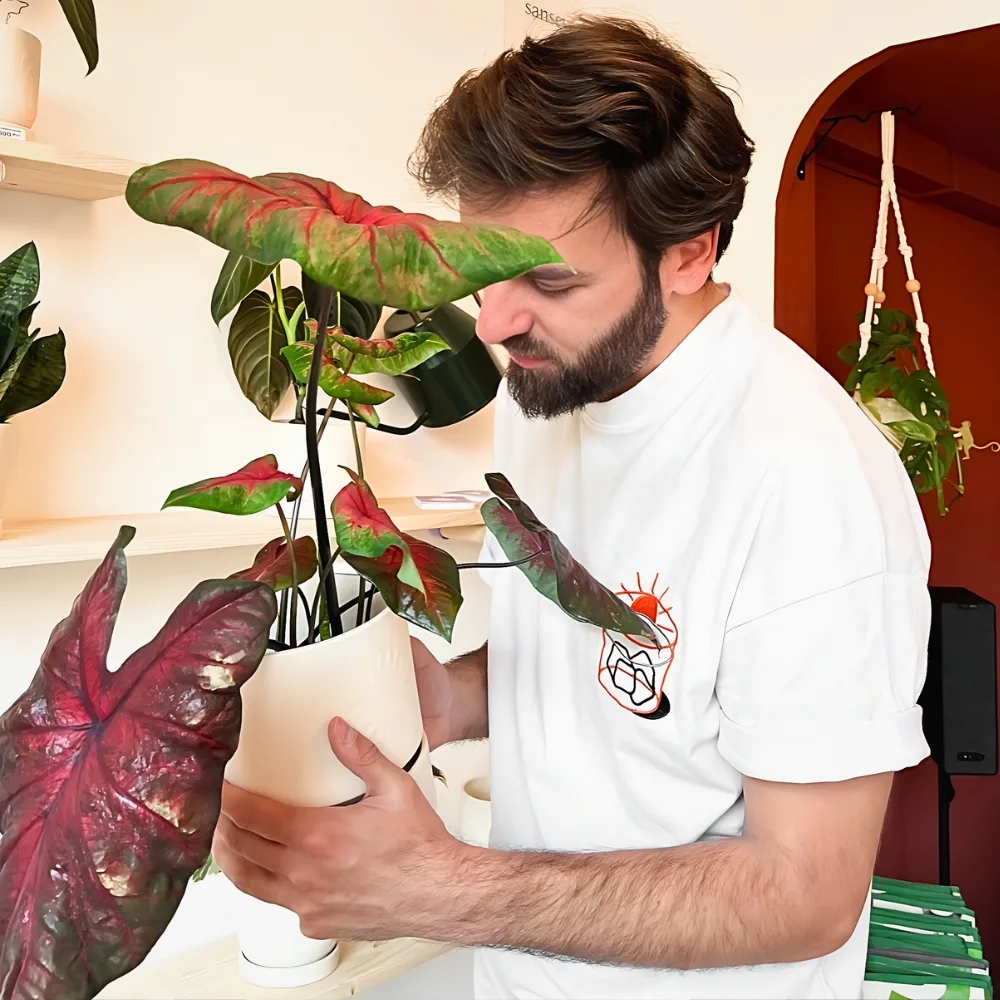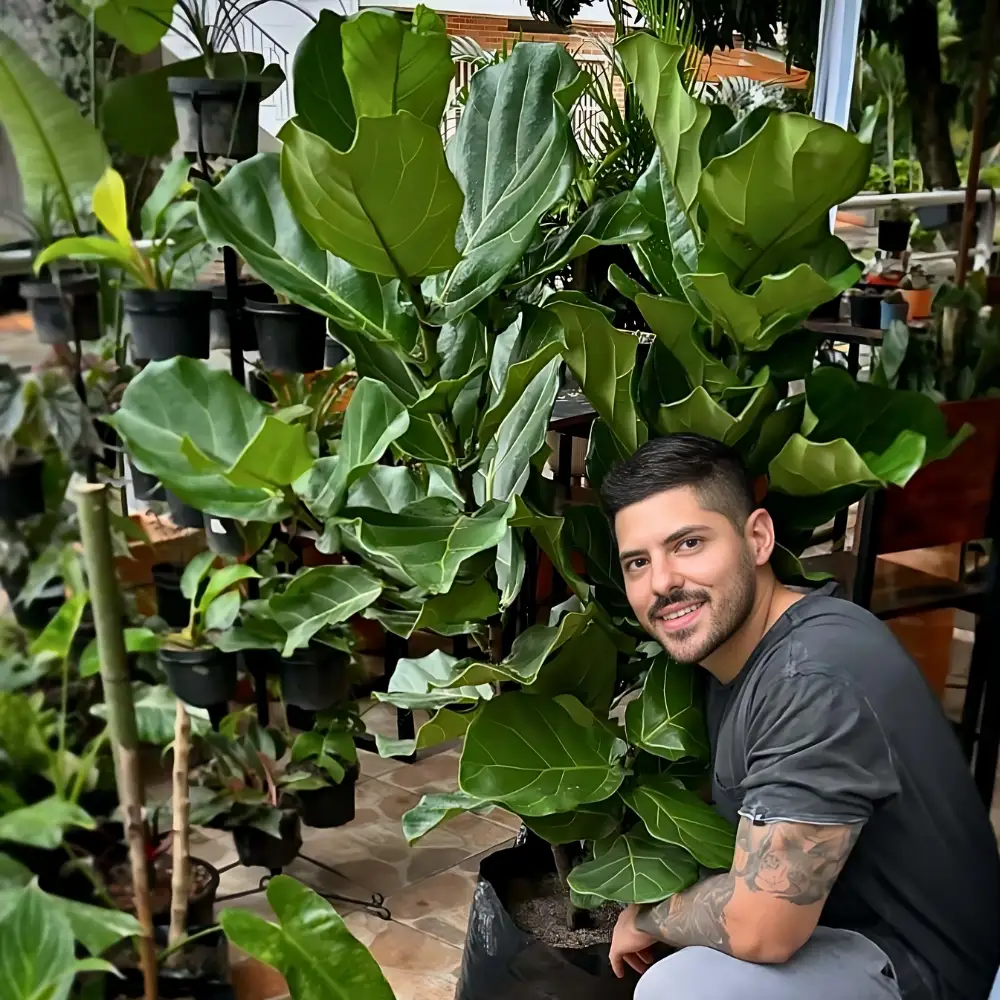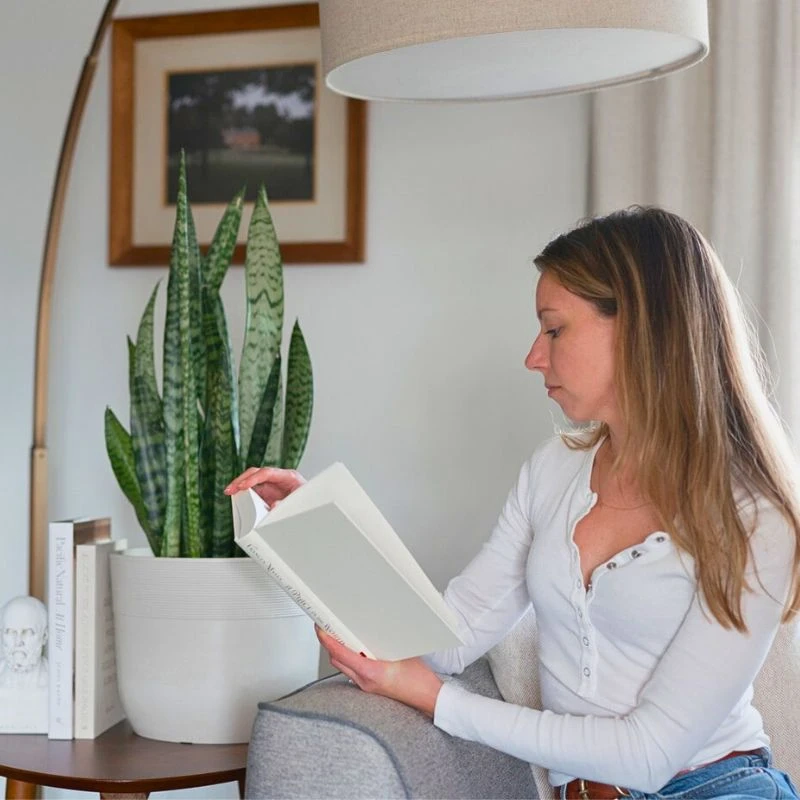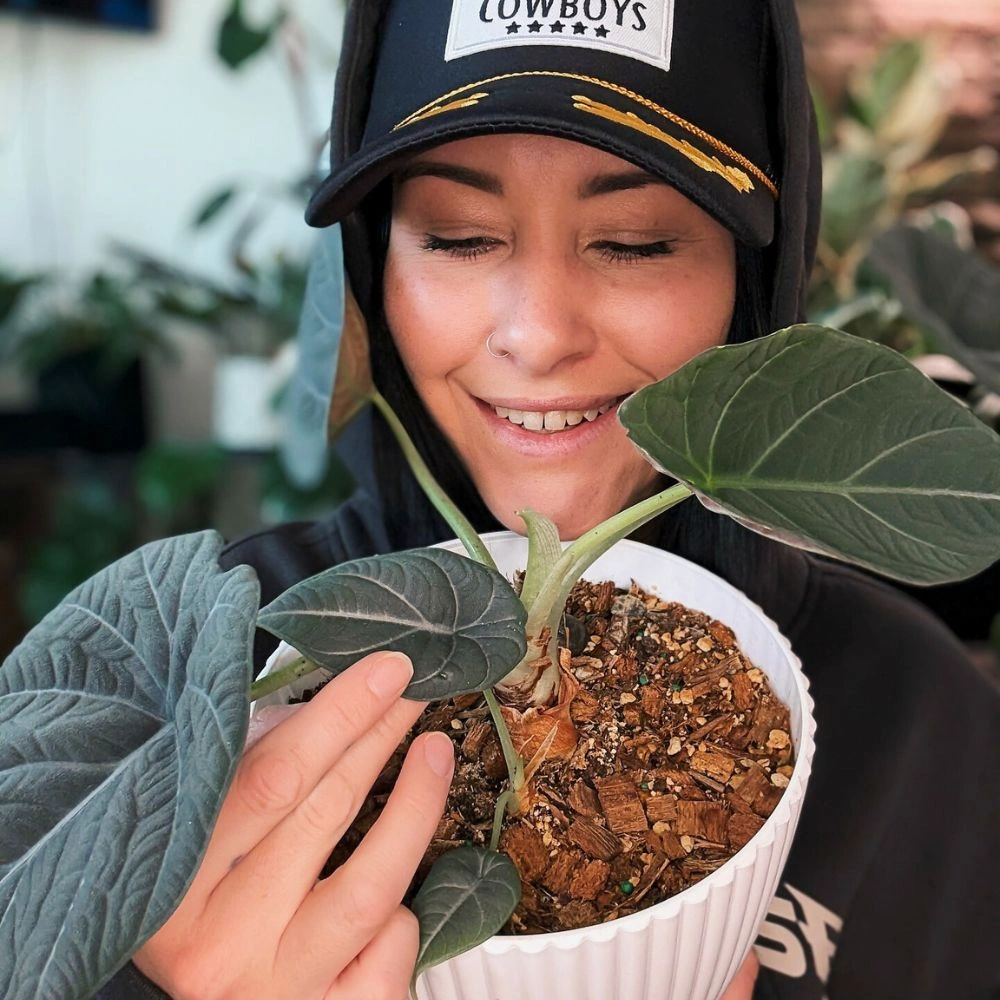Until mid-2020, my boyfriend and I lived with more than 100 houseplants in an apartment of about 50m2. Then a baby came! But how do you do that... living with a baby and a lot of plants in the house? 
Baby-Proof Living With Houseplants
In this Mama Botanica blog, I share my experiences and give you tips on what to look out for if you have small children and plants at home and how to let them live together successfully.
1. Poisonous Houseplants
Apart from the soil being scattered everywhere or plants falling over, the most important thing to be aware of is that there are houseplants that are poisonous. They look so beautiful and harmless, but some plants contain poisonous substances, which can be harmful to your baby. Fortunately, this doesn't mean you have to get rid of all your plants right away. In most cases, your child really needs to consume a lot of a plant before it is harmful. And usually, these plants taste bitter, which makes that they stop eating after a single bite. In the worst case, your baby will feel nauseous for a while, and then it will be over. 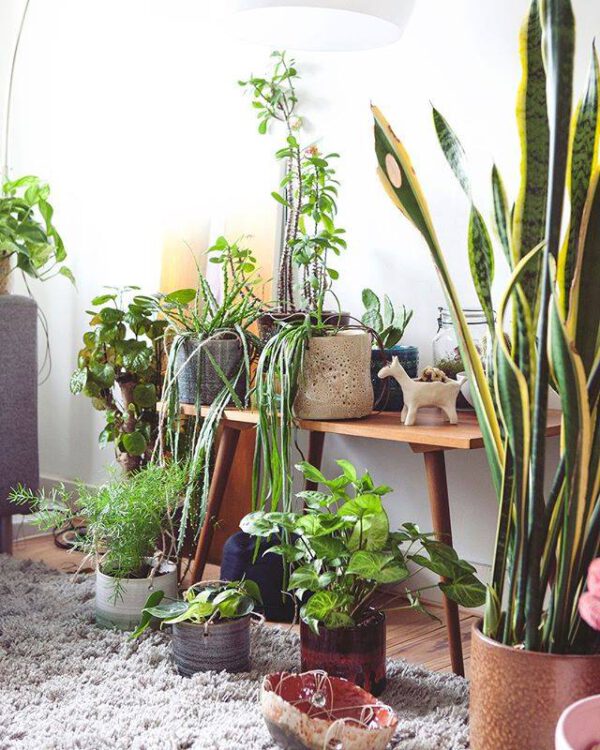 But with a number of plants, the risk is slightly higher. This is not stated on the plant label, so make sure you do your research before bringing a plant into your home. Unfortunately, no complete overview can be found on the internet, but a quick Google search often gives you enough information. A plant that you would rather not bring into your home if you have small children is the Dieffenbachia. It is also harmful in small amounts. The juice from Euphorbias can also damage the delicate skin or eyes of your child. Do you think your child has eaten a plant and you don't know if it is harmful? Always consult a doctor. Make sure you know the Latin name of all your house plants, so you can be helped faster. So, find out which of your plants are completely safe and which plants you should pay attention to. And use the tips below for more solutions.
But with a number of plants, the risk is slightly higher. This is not stated on the plant label, so make sure you do your research before bringing a plant into your home. Unfortunately, no complete overview can be found on the internet, but a quick Google search often gives you enough information. A plant that you would rather not bring into your home if you have small children is the Dieffenbachia. It is also harmful in small amounts. The juice from Euphorbias can also damage the delicate skin or eyes of your child. Do you think your child has eaten a plant and you don't know if it is harmful? Always consult a doctor. Make sure you know the Latin name of all your house plants, so you can be helped faster. So, find out which of your plants are completely safe and which plants you should pay attention to. And use the tips below for more solutions.
2. Keep your houseplants out of the reach of your children
This might sound a bit obvious, but make sure your child can't reach your plants. Make shelves on the wall, put them on tables or cabinets or a sturdy plant stand. The disadvantage is that you can keep busy with changing places of your plants. At our house, all plants first went off the ground, then from the side tables and now our daughter can suddenly reach the plants on the cupboard, so they have to get a new place. Where possible, I put plants in a hanging pot and cut these plants shorter when they get so long that the little one can reach them.
3. Make a plant cabinet
A new plant trend is to turn a glass display cabinet, for example from IKEA, into a greenhouse. Here your most special plants are completely safe from grabbing hands. Such a cabinet is perfect for tropical plants because the humidity easily remains high. Want to know more about this? You can find a lot of information and inspiration on the Instagram page of IKEA Greenhouse Cabinet. 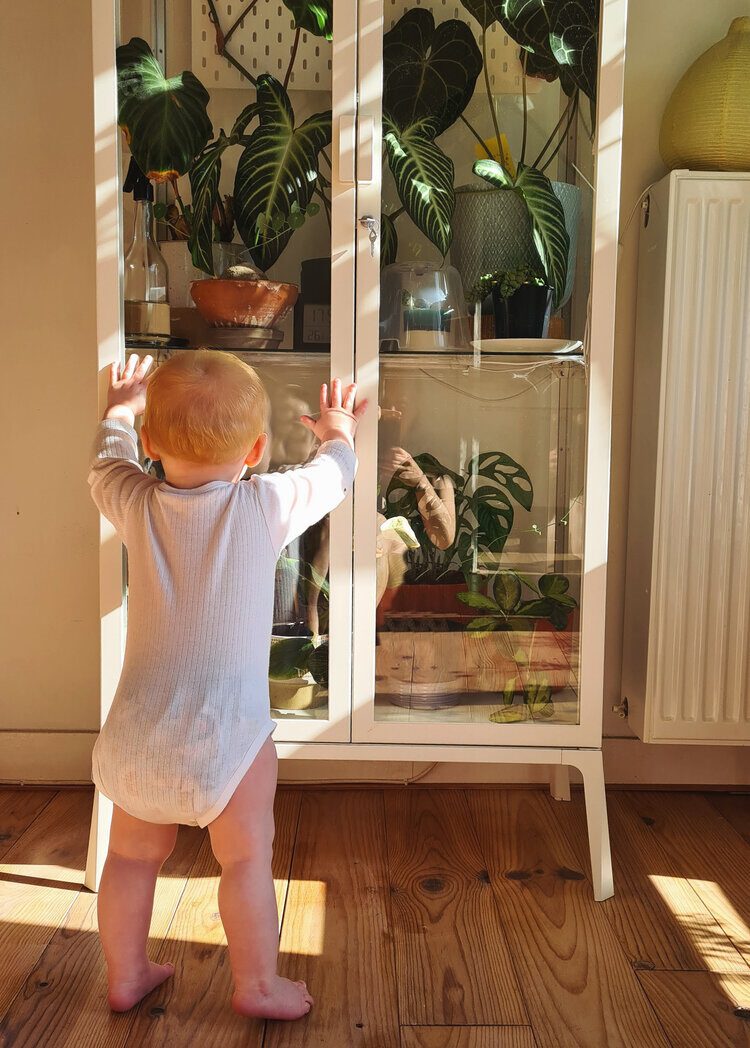
4. Shrink your collection
Before our daughter was born, I really had to downsize my plant collection. There were heaps of plants on the ground and I could never put them all out of reach. I gave away all kinds of plants to friends, so I was able to make many people happy with a new plant. 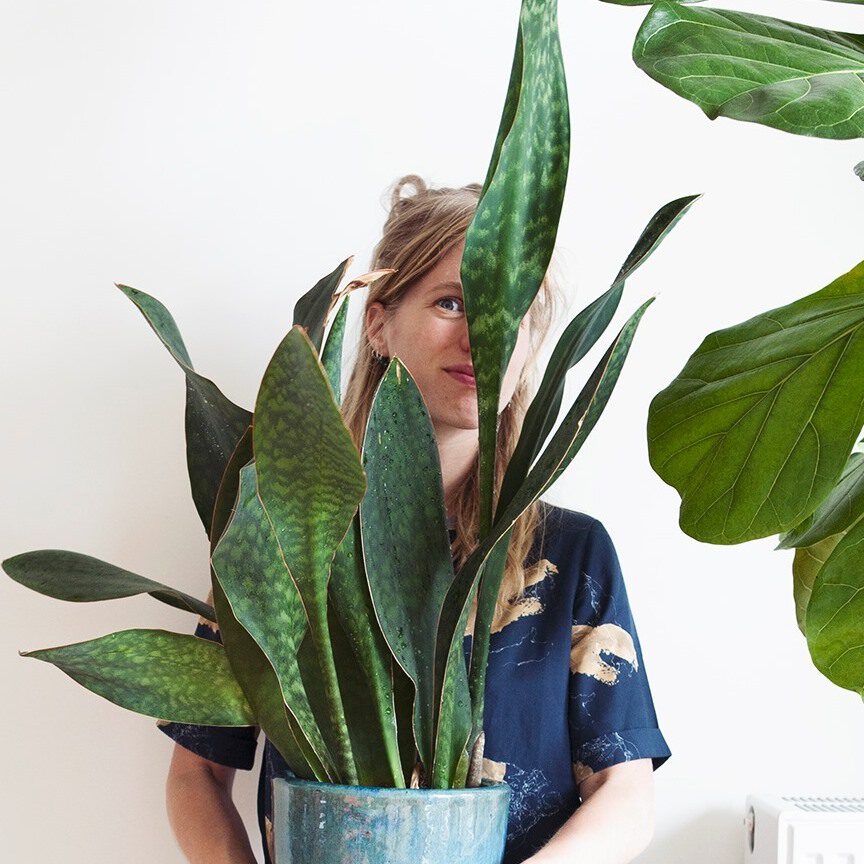 The plants that are most dear to me were allowed to stay anyway. Plants that I have a memory of, that I grew myself from a cutting or that someone gave to me. But sometimes I also had to make difficult choices. A Dieffenbachia that I couldn't put out of reach of the little one has gone to a new home anyway. Fortunately, the space was also very welcome. Because, with a child, there are also a lot of extra things needed indoors.
The plants that are most dear to me were allowed to stay anyway. Plants that I have a memory of, that I grew myself from a cutting or that someone gave to me. But sometimes I also had to make difficult choices. A Dieffenbachia that I couldn't put out of reach of the little one has gone to a new home anyway. Fortunately, the space was also very welcome. Because, with a child, there are also a lot of extra things needed indoors.
5. Choose safe plants and sturdy pots
Do you bring new plants into your home, or do you have to choose which plants can stay in the house? Then choose safe plants. This ensures that you don't have to worry. Fortunately, there are plenty of plants that your child can nibble on, although they will not be tasty. The following list contains a few suggestions of 'safe' plants, but there are many more.
- Chlorophytum comosum - Spider plant
- Calathea - Peacock plant
- Musa Dwarf Cavendish - banana plant
- Areca - Areca palm
- Aspidistra Eliator - cast-iron-plant
- Beaucarnea recurvata - elephant's foot
- Asplenium nidus / nest fern
If you choose a large plant that will stand on the ground, put it in a sturdy, heavy pot. Your child will pull himself up on the pot anyway, so make sure it can't fall over. If you put a non-toxic plant in this, at least your child can mess around safely.
6. Is it bad if my child eats potting soil?
They can be pretty fast, those little children! Before you know it, their hands are in the potting soil and that soil ends up in their mouth. Not really appetizing, but fortunately not really worrisome either. A hand or a few handfuls of potting soil are not harmful. It can even be a positive thing because your child gets a dose of microbes that put the immune system to work. This increases the health resistance of your child. If your child eats soil from a place or pot where animals also poop, or where the soil is contaminated, it is wise to contact a doctor.
7. Teach your child not to touch the plants
Teach your baby that he or she is not allowed to touch the plants. This of course differs greatly per child; my mother told me that after one warning I stopped touching the plants, but my brothers couldn't keep their hands off of them. Consistently repeating that the plant is off-limits will certainly help. Make sure that you only have safe plants that are within reach, should things go wrong. 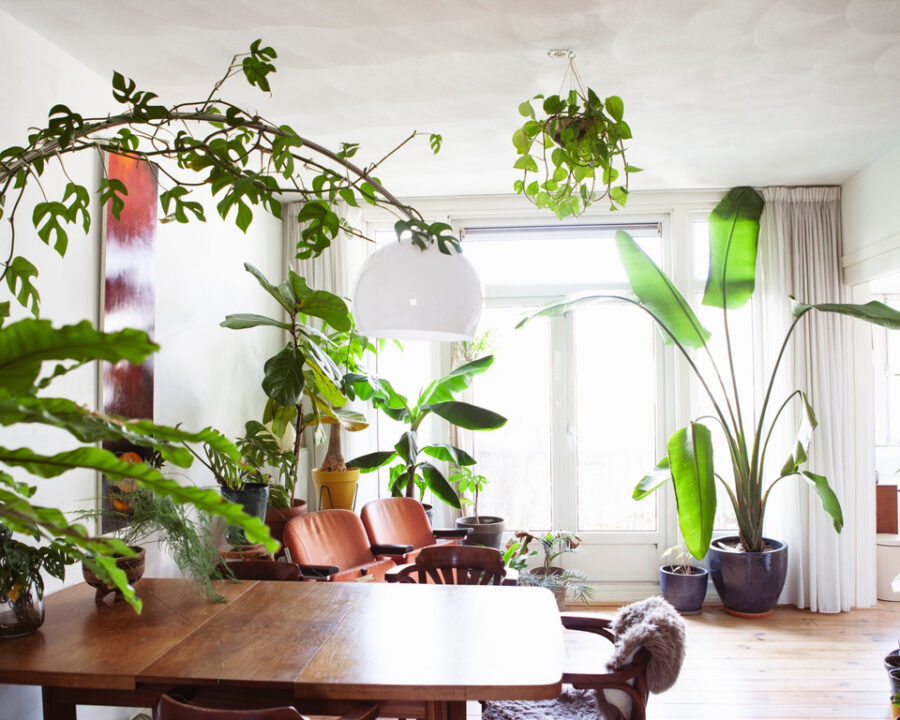
8. Let your kids help take care of them
When your child is a bit older, you can of course let him or her help take care of the plants. Give your kid a watering can of its own and perhaps a few own plants that he or she can take care of. Choose a plant that grows quickly and is easy to care for and take cuttings, such as the spider plant. You can be sure that your child will be proud!
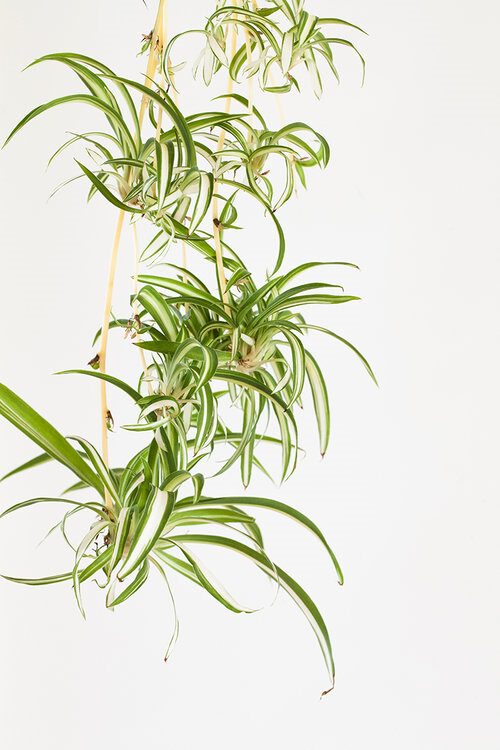
9. Accept that sometimes a plant will die
Well, this one is really inevitable. Even if everything is out of reach, maybe one day a ball will hit a pot. Or your child can suddenly get much higher than before and pull a plant from the cupboard. Fortunately, your plant does not have to be dead immediately. Clean up the mess and see what's left to save. Are there just some cracked leaves? Cut them off and give your plant a new pot. Even if a large part has broken off the plant, your plant can often still grow back and if there is nothing left to save, you can always start again with new cuttings.
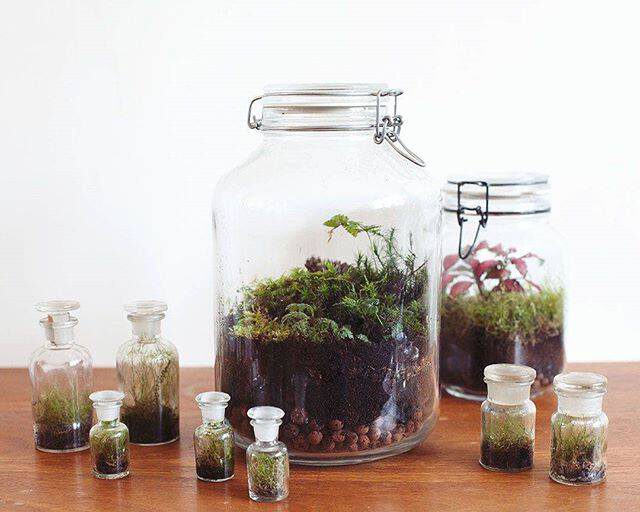
It can sometimes be a challenge, having a baby in the house and a large collection of plants. But it also has tremendous value. Your child will grow up with greenery around him or her, he or she will learn that you have to take care of your environment and will hopefully develop a good dose of love for nature. That's great! And make sure that your child also takes a picture with a plant (perhaps just in the background). I have pictures of myself as a kid together with plants that are still thriving in my father's house! So special to realize that those plants are older than me. All image credits by Mama Botanica, except header image by Anastasiya Gepp on Pexels.

